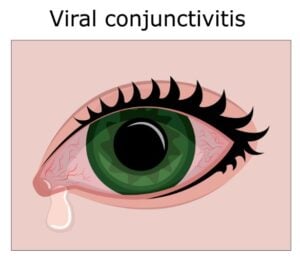Key Takeaways
Watching the sunrise and sunset can be very meditative. For generations, sun gazing has been considered a peaceful practice that boosts mental, emotional, and spiritual health.
However, there are no proven health benefits to sun gazing. Medical professionals consider staring directly into the sun an unsafe practice. Looking directly at the sun, especially for prolonged periods, can damage your eyes.
- Wear sunglasses. Protect your eyes from the sun’s harmful ultraviolet (UV) rays.
- Don’t look directly at the sun. Place your attention elsewhere while gazing.
Gazing has known health benefits. You can do it in beautiful, sunny settings without hurting your eyes.
What Is Sun Gazing?
Sun gazing is a meditative practice. It refers to looking at the sun during off-peak times, such as the sunrise and the sunset.3
There are many physical and mental health benefits to gazing. But gazing into the sun directly can damage your eyes.
You have to be careful while staring at the sun. There are considerations you should keep in mind.
Claimed Benefits of Sun Gazing
Many people claim sun gazing has benefits. But science has yet to prove it. Some of the potentially true sun gazing benefits include:3
- Increased levels of serotonin and melatonin
- Boosted natural energy
- Enhanced immune system
- Improved physical, mental, emotional, and spiritual health
- Deeper connectivity with the self
- Reduced stress
More scientific research needs to be done to determine whether or not these claims are true.
The only concrete research indicates that spending time sun gazing can take a toll on your eye health. This is why medical experts advise against it.
What Are the Risks of Sun Gazing?
Staring directly into the sun is not safe. There are many risks. You can burn your eyes. A sunburned cornea is known as photokeratitis. A burned retina is called solar retinopathy.7, 10
Heavy sun exposure is also linked to eye cancer.8 Too much sun exposure can also cause cataracts, speed up macular degeneration, and cause growths over the white part of your eye (the sclera). These growths are known as pingueculas and pterygiums.
Health Benefits of Safe Sun Exposure
It’s no secret that safe sun exposure has ample health benefits. The sun provides nutrients that are beneficial to your physical and mental health.
- The sun produces vitamin D. Vitamin D can help the body absorb calcium. It is also known to help keep infections at bay and reduce inflammation.11
- The sun regulates the body’s natural sleep cycle or circadian clock. When you see sunlight, your brain knows it’s time to wake up. When the sun goes down, your brain signals to your body that it’s time to sleep.4
- Healthy sun exposure may reduce refractive errors in children. Some research has shown that children’s exposure to sunlight and the outdoors may reduce myopia (nearsightedness).6
How to Practice Safe Sun Exposure
While there are certainly benefits to being in the sun, it can cause damage to more than just your eyes.
The sun can cause sunburn from too much UV radiation. Too much sun exposure to your skin is a leading cause of skin cancer.
Always wear protective sunscreen and sunglasses. Reapply sunscreen every few hours or after you swim. Wearing a hat can help protect your scalp, face, and eyes. Wearing UV-protective clothing and sitting under an umbrella can also help.
Alternative Mindfulness Practices
There are plenty of other mindfulness practices you can try that are safer than practicing sun gazing.
For example, meditation has many spiritual, physical, and mental health benefits. It is known to increase self-awareness and decrease stress. It can also lower your resting heart rate and blood pressure. All of this helps improve your sleep, which has a cyclical effect.2
You can try different types of meditation practices, including apps. Headspace, Calm, and Aaptiv are popular apps with guided meditations.
Other alternative mindfulness practices include:
- Practicing breathwork. Evidence suggests that taking deep breaths and holding them can reduce stress.2
- Journaling. This is linked to reduced stress, lower blood pressure, and improved mood. It’s also correlated with greater well-being.1, 9
- Getting quality sleep. Sleeping the recommended 7 or more hours per night is important for your physical and mental health.5
If you’re going to practice sun gazing, follow safety precautions to gain positive energy without hurting your eyes.
How to Sun Gaze
To be clear, medical experts do not recommend sun gazing. But spiritual health gurus recommend these tips if you want to practice sun gazing:
- Go sun gazing during off-peak hours. The UV index is much lower during sunrise and sunset.
- Sun gaze outside. Sun gazing through a window does not provide the same calming effect.
- Be barefoot. Connecting to the earth with bare feet is another spiritual practice that can enhance the sun-gazing experience.
- Relax, take conscious breaths, and listen to your body. If you feel the need to blink, do it.
- Take breaks. If you’re a beginner, take periodic breaks by closing your eyes.
Because practicing sun gazing can damage your eyes, follow safety precautions to protect your eyes from the sun’s rays:
- Wear sunglasses to shield your eyes from UV rays
- Do not stare directly into the sun
- Do not stare into the sun for prolonged periods
In this article







